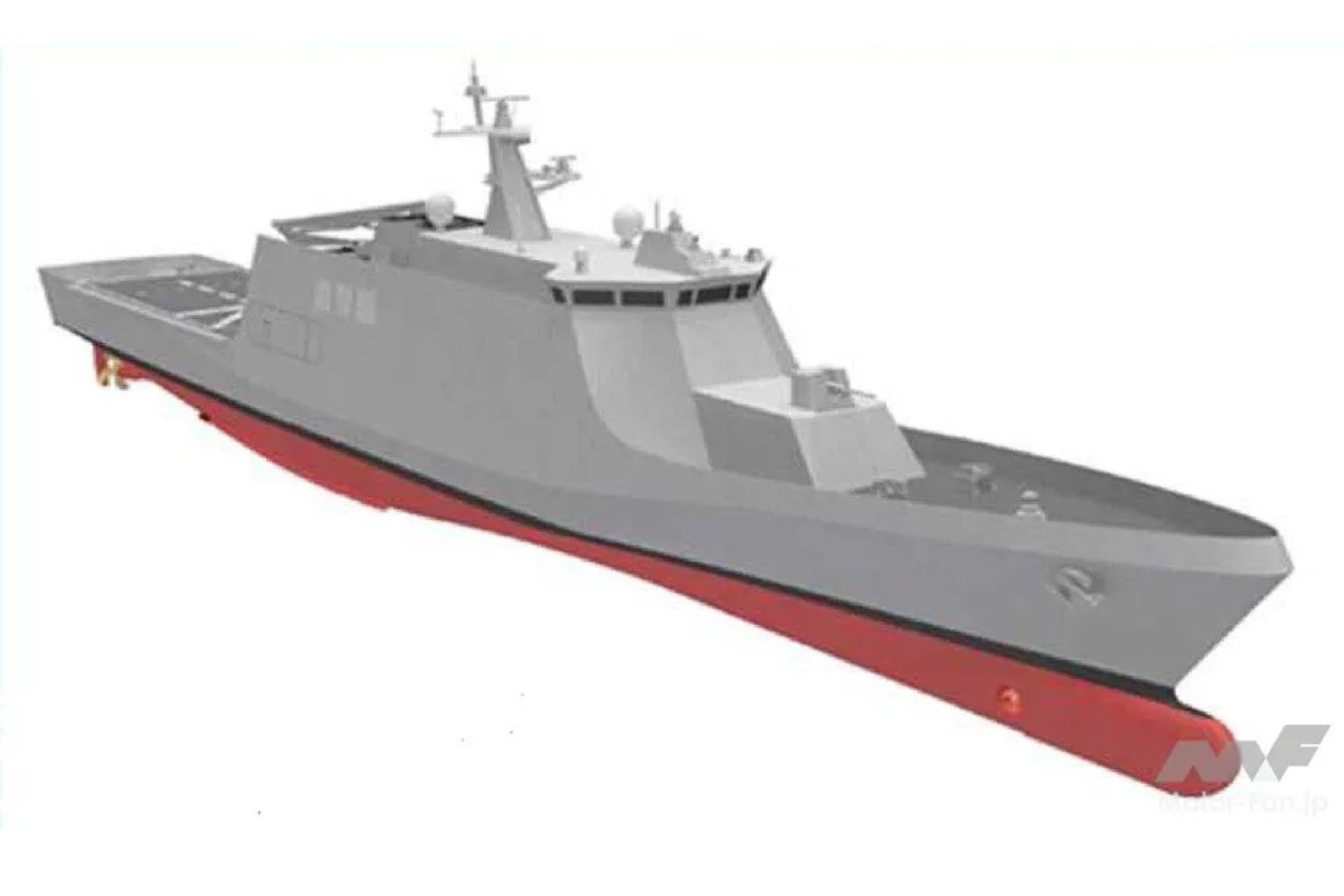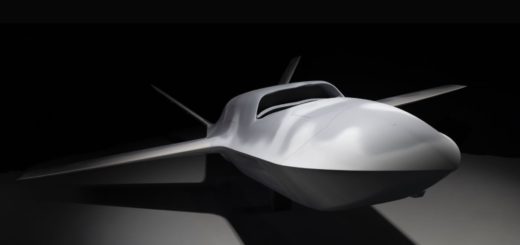Japan Begins Production of Stealth Patrol Vessels to Enhance Surveillance of its Territorial Waters

{loadposition bannertop}
{loadposition sidebarpub}
Amid increasing naval activity by China and Russia near its maritime borders, Japan has launched the construction of a new series of next-generation patrol vessels for the Japan Maritime Self-Defense Force (JMSDF). The program calls for the commissioning of twelve versatile ships, with the keels of the first four laid in February 2025 at the Japan Marine United shipyard in Yokohama. The project, funded at ¥35.7 billion under the fiscal year 2023 budget, approximately ¥9 billion per ship, aims to enhance Japan’s maritime surveillance capabilities while reducing crew requirements in response to growing recruitment challenges within the armed forces.
Follow Army Recognition on Google News at this link
Their design incorporates stealth features such as a reduced radar cross-section, advanced automation to enable operation with a crew of only 30, and equipment optimized for intelligence, surveillance, and reconnaissance (ISR) missions (Picture source: JMSDF)
According to the Ministry of Defense, the first two vessels are scheduled to be launched in November 2025, with the remaining two following in March 2026. All four are expected to be delivered to the JMSDF by March 2027. Measuring 95 meters in length and 12 meters in width, the ships will have a standard displacement of approximately 1,920 tons. Their design incorporates stealth features such as a reduced radar cross-section, advanced automation to enable operation with a crew of only 30, and equipment optimized for intelligence, surveillance, and reconnaissance (ISR) missions.
These new patrol vessels follow a modular design strategy. Each will include a multifunction hangar, a deck configured to carry various mission payloads, and a stern launching and recovery system. The design allows for potential integration of modular missile systems, such as those inspired by the U.S. Mk.. 70 Payload Delivery System. Housed in a 40-foot container, this system can accommodate and launch various types of missiles, including anti-ship, anti-air, and anti-submarine systems, enabling rapid mission configuration. For now, the vessels’ only fixed weapon is a remotely operated 30 mm cannon, suited for peacetime patrol duties.
The ships will also be equipped to deploy multiple types of drones, beginning with the V-BAT vertical take-off and landing UAV developed by Shield AI. Designed to operate in confined areas with a 4-square-meter footprint and offering a maximum flight endurance of 10 hours, the V-BAT will extend the vessels’ surveillance range. The configuration also suggests the possibility of operating surface and underwater unmanned systems, further expanding the vessels’ ISR and maritime security roles.
The Ministry of Defense emphasized that Japan, which possesses one of the world’s six largest exclusive economic zones, must maintain continuous surveillance around areas such as Hokkaido, the Sea of Japan, and the East China Sea. These new patrol vessels are intended to support that effort by increasing operational coverage and flexibility, while also contributing to overseas security cooperation, as outlined in the Defense Buildup Program published in late 2022.
However, these vessels are not expected to operate directly in the most contested areas, such as the Senkaku Islands, which are administered by Japan but also claimed by China. Tokyo has avoided deploying JMSDF assets near the islets to prevent escalation and to avoid giving Beijing a pretext to deploy its navy there. Instead, these new ships are more likely to be assigned to patrol other parts of Japan’s southwestern island chain, away from direct flashpoints.
Regional security conditions remain tense. The Chinese navy, now the largest in the world, has expanded its operational reach as far as the waters near Australia. Last year, Tokyo filed a strong diplomatic protest after a Chinese navy survey ship entered Japanese territorial waters off Kagoshima Prefecture. Shortly before that, a Chinese military aircraft entered Japanese airspace for the first time. These incidents, along with an uptick in Chinese aerial activity near Japanese territory, highlight a pattern of testing Japan’s surveillance and response systems.
In response to these developments, Japan is pursuing a pragmatic rearmament strategy. These patrol vessels represent a technological and structural approach: cost-effective, low-maintenance, and requiring minimal personnel, while offering significant potential for future upgrades. They provide Japan with a flexible maritime platform suited to maintaining security without directly provoking confrontation. The program’s design reflects Japan’s aim to balance deterrence, international security cooperation, and cost control.
The launch of this new patrol vessel program marks a significant step in the JMSDF’s gradual adaptation to evolving strategic demands. These ships combine operational efficiency, modular adaptability, and technological scalability in a regional environment characterized by growing instability. Their development underscores Japan’s strategic intent to safeguard its maritime interests while anticipating future security challenges, all within a deliberately restrained defensive posture.

{loadposition bannertop}
{loadposition sidebarpub}
Amid increasing naval activity by China and Russia near its maritime borders, Japan has launched the construction of a new series of next-generation patrol vessels for the Japan Maritime Self-Defense Force (JMSDF). The program calls for the commissioning of twelve versatile ships, with the keels of the first four laid in February 2025 at the Japan Marine United shipyard in Yokohama. The project, funded at ¥35.7 billion under the fiscal year 2023 budget, approximately ¥9 billion per ship, aims to enhance Japan’s maritime surveillance capabilities while reducing crew requirements in response to growing recruitment challenges within the armed forces.
Their design incorporates stealth features such as a reduced radar cross-section, advanced automation to enable operation with a crew of only 30, and equipment optimized for intelligence, surveillance, and reconnaissance (ISR) missions (Picture source: JMSDF)
According to the Ministry of Defense, the first two vessels are scheduled to be launched in November 2025, with the remaining two following in March 2026. All four are expected to be delivered to the JMSDF by March 2027. Measuring 95 meters in length and 12 meters in width, the ships will have a standard displacement of approximately 1,920 tons. Their design incorporates stealth features such as a reduced radar cross-section, advanced automation to enable operation with a crew of only 30, and equipment optimized for intelligence, surveillance, and reconnaissance (ISR) missions.
These new patrol vessels follow a modular design strategy. Each will include a multifunction hangar, a deck configured to carry various mission payloads, and a stern launching and recovery system. The design allows for potential integration of modular missile systems, such as those inspired by the U.S. Mk.. 70 Payload Delivery System. Housed in a 40-foot container, this system can accommodate and launch various types of missiles, including anti-ship, anti-air, and anti-submarine systems, enabling rapid mission configuration. For now, the vessels’ only fixed weapon is a remotely operated 30 mm cannon, suited for peacetime patrol duties.
The ships will also be equipped to deploy multiple types of drones, beginning with the V-BAT vertical take-off and landing UAV developed by Shield AI. Designed to operate in confined areas with a 4-square-meter footprint and offering a maximum flight endurance of 10 hours, the V-BAT will extend the vessels’ surveillance range. The configuration also suggests the possibility of operating surface and underwater unmanned systems, further expanding the vessels’ ISR and maritime security roles.
The Ministry of Defense emphasized that Japan, which possesses one of the world’s six largest exclusive economic zones, must maintain continuous surveillance around areas such as Hokkaido, the Sea of Japan, and the East China Sea. These new patrol vessels are intended to support that effort by increasing operational coverage and flexibility, while also contributing to overseas security cooperation, as outlined in the Defense Buildup Program published in late 2022.
However, these vessels are not expected to operate directly in the most contested areas, such as the Senkaku Islands, which are administered by Japan but also claimed by China. Tokyo has avoided deploying JMSDF assets near the islets to prevent escalation and to avoid giving Beijing a pretext to deploy its navy there. Instead, these new ships are more likely to be assigned to patrol other parts of Japan’s southwestern island chain, away from direct flashpoints.
Regional security conditions remain tense. The Chinese navy, now the largest in the world, has expanded its operational reach as far as the waters near Australia. Last year, Tokyo filed a strong diplomatic protest after a Chinese navy survey ship entered Japanese territorial waters off Kagoshima Prefecture. Shortly before that, a Chinese military aircraft entered Japanese airspace for the first time. These incidents, along with an uptick in Chinese aerial activity near Japanese territory, highlight a pattern of testing Japan’s surveillance and response systems.
In response to these developments, Japan is pursuing a pragmatic rearmament strategy. These patrol vessels represent a technological and structural approach: cost-effective, low-maintenance, and requiring minimal personnel, while offering significant potential for future upgrades. They provide Japan with a flexible maritime platform suited to maintaining security without directly provoking confrontation. The program’s design reflects Japan’s aim to balance deterrence, international security cooperation, and cost control.
The launch of this new patrol vessel program marks a significant step in the JMSDF’s gradual adaptation to evolving strategic demands. These ships combine operational efficiency, modular adaptability, and technological scalability in a regional environment characterized by growing instability. Their development underscores Japan’s strategic intent to safeguard its maritime interests while anticipating future security challenges, all within a deliberately restrained defensive posture.






